Guochao Liu
Towards Stable 3D Object Detection
Jul 05, 2024



Abstract:In autonomous driving, the temporal stability of 3D object detection greatly impacts the driving safety. However, the detection stability cannot be accessed by existing metrics such as mAP and MOTA, and consequently is less explored by the community. To bridge this gap, this work proposes Stability Index (SI), a new metric that can comprehensively evaluate the stability of 3D detectors in terms of confidence, box localization, extent, and heading. By benchmarking state-of-the-art object detectors on the Waymo Open Dataset, SI reveals interesting properties of object stability that have not been previously discovered by other metrics. To help models improve their stability, we further introduce a general and effective training strategy, called Prediction Consistency Learning (PCL). PCL essentially encourages the prediction consistency of the same objects under different timestamps and augmentations, leading to enhanced detection stability. Furthermore, we examine the effectiveness of PCL with the widely-used CenterPoint, and achieve a remarkable SI of 86.00 for vehicle class, surpassing the baseline by 5.48. We hope our work could serve as a reliable baseline and draw the community's attention to this crucial issue in 3D object detection. Codes will be made publicly available.
Improving Federated Learning Face Recognition via Privacy-Agnostic Clusters
Jan 29, 2022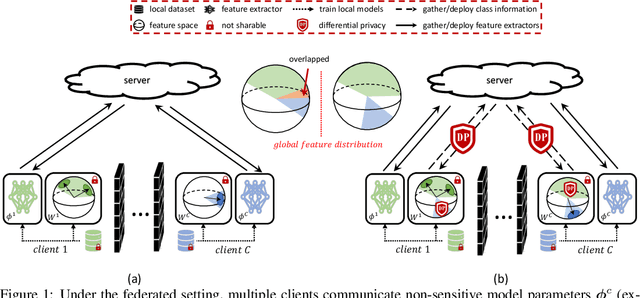
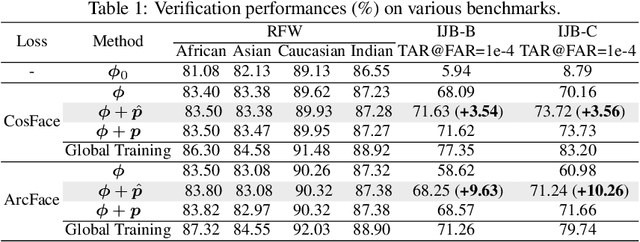


Abstract:The growing public concerns on data privacy in face recognition can be greatly addressed by the federated learning (FL) paradigm. However, conventional FL methods perform poorly due to the uniqueness of the task: broadcasting class centers among clients is crucial for recognition performances but leads to privacy leakage. To resolve the privacy-utility paradox, this work proposes PrivacyFace, a framework largely improves the federated learning face recognition via communicating auxiliary and privacy-agnostic information among clients. PrivacyFace mainly consists of two components: First, a practical Differentially Private Local Clustering (DPLC) mechanism is proposed to distill sanitized clusters from local class centers. Second, a consensus-aware recognition loss subsequently encourages global consensuses among clients, which ergo results in more discriminative features. The proposed framework is mathematically proved to be differentially private, introducing a lightweight overhead as well as yielding prominent performance boosts (\textit{e.g.}, +9.63\% and +10.26\% for TAR@FAR=1e-4 on IJB-B and IJB-C respectively). Extensive experiments and ablation studies on a large-scale dataset have demonstrated the efficacy and practicability of our method.
Bottom-up Broadcast Neural Network For Music Genre Classification
Jan 24, 2019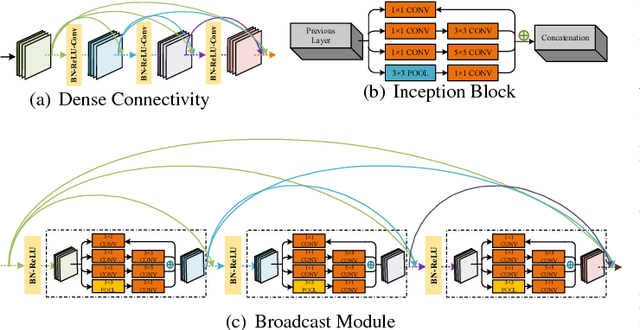
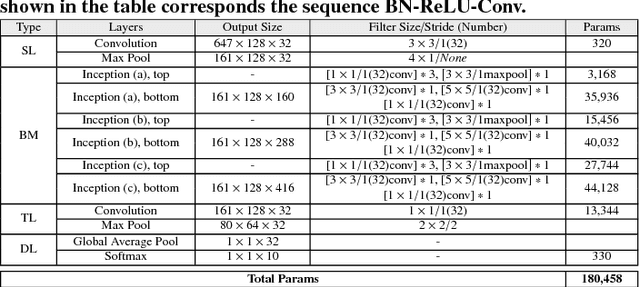
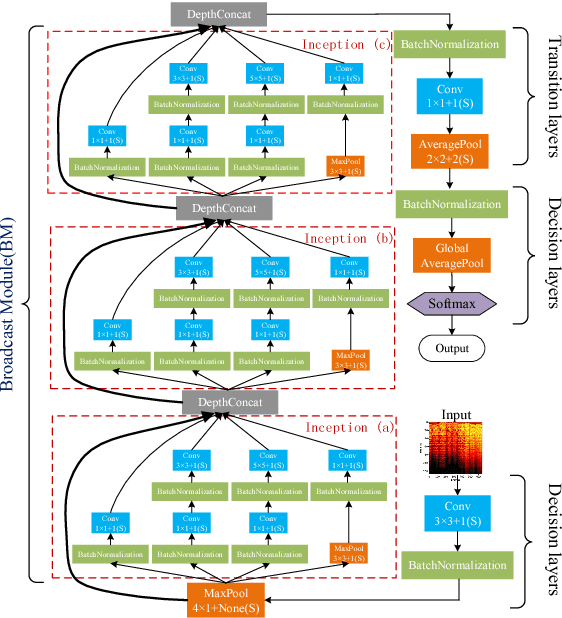
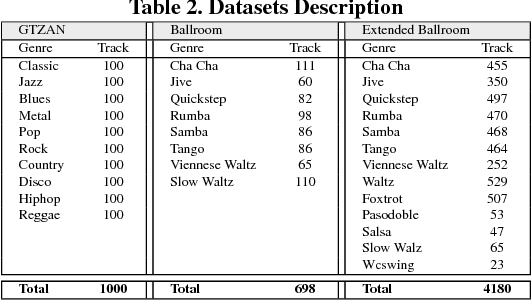
Abstract:Music genre recognition based on visual representation has been successfully explored over the last years. Recently, there has been increasing interest in attempting convolutional neural networks (CNNs) to achieve the task. However, most of existing methods employ the mature CNN structures proposed in image recognition without any modification, which results in the learning features that are not adequate for music genre classification. Faced with the challenge of this issue, we fully exploit the low-level information from spectrograms of audios and develop a novel CNN architecture in this paper. The proposed CNN architecture takes the long contextual information into considerations, which transfers more suitable information for the decision-making layer. Various experiments on several benchmark datasets, including GTZAN, Ballroom, and Extended Ballroom, have verified the excellent performances of the proposed neural network. Codes and model will be available at "ttps://github.com/CaifengLiu/music-genre-classification".
 Add to Chrome
Add to Chrome Add to Firefox
Add to Firefox Add to Edge
Add to Edge